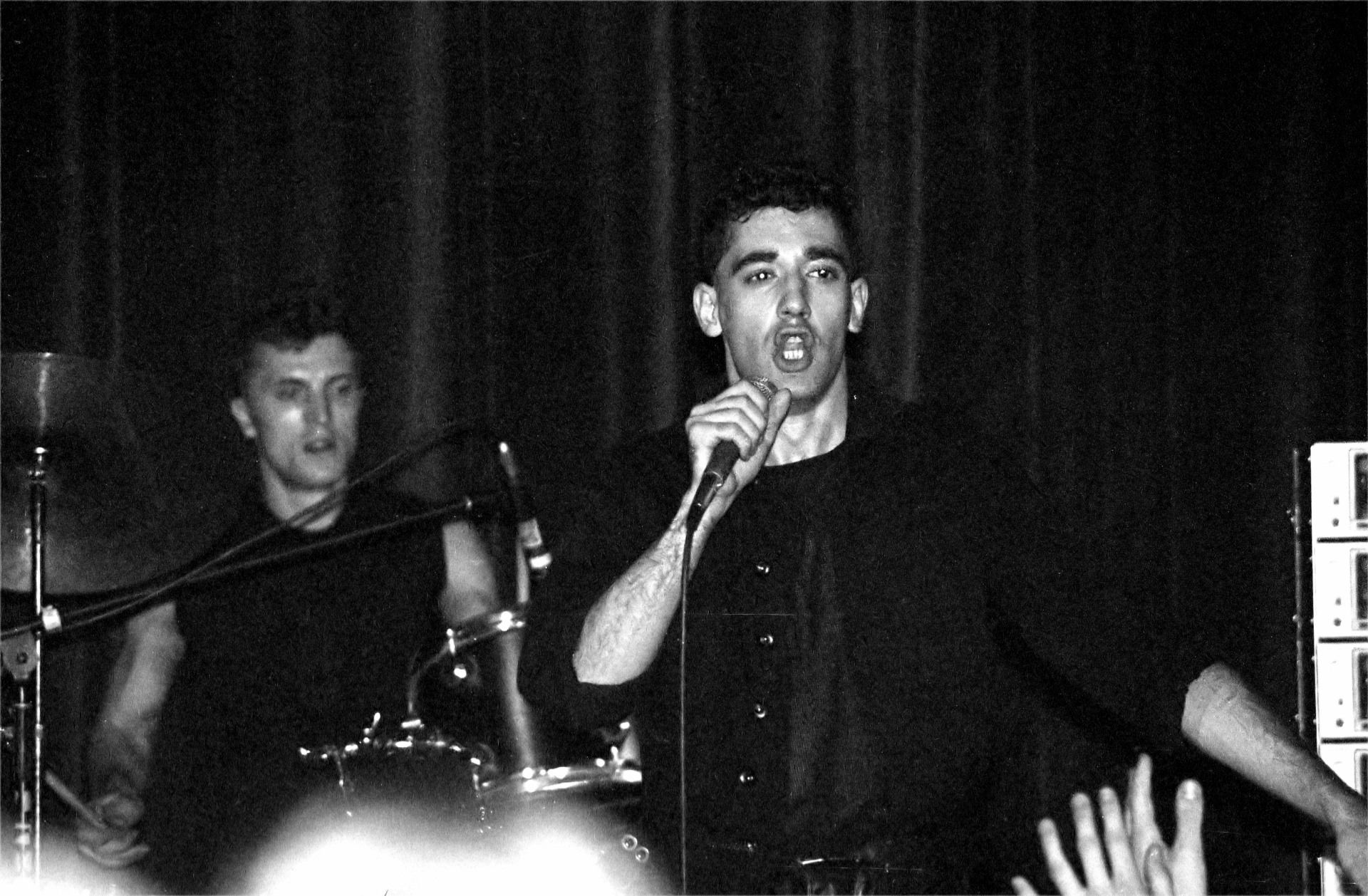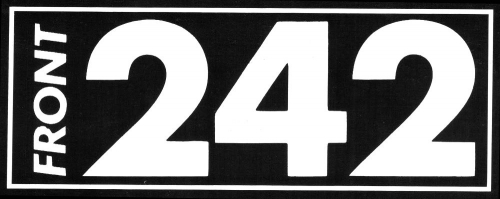|
Electronic Body Music
Electronic body music (EBM) is a genre of electronic music that combines elements of industrial music and synth-punk with elements of dance music. It developed in the early 1980s in Western Europe, as an outgrowth of both the punk and the industrial music cultures. It combines sequenced repetitive basslines, programmed disco rhythms, and mostly undistorted vocals and command-like shouts with confrontational or provocative themes. The evolution of the genre reflected "a general shift towards more song-oriented structures in industrial as to a general turn towards the dancefloor by many musicians and genres in the era of post-punk."Timor Kaul: ''Electronic Body Music''. In: Thomas Hecken, Marcus S. Kleiner: ''Handbook Popculture.'' J.B. Metzler Verlag 2017, , p. 102–104. It was considered a part of the European new wave and post-punk movement and the first style that blended synthesized sounds with an ecstatic style of dancing (e.g. pogo). EBM gained a stable follow ... [...More Info...] [...Related Items...] OR: [Wikipedia] [Google] [Baidu] |
Front 242
Front 242 is a Belgian electronic music group that came into prominence during the 1980s. Pioneering the style they called electronic body music, they influenced the electronic and industrial music genres. History Formation Front 242 were formed in 1981 in Aarschot, near Leuven, Belgium, by Daniel Bressanutti and Dirk Bergen, who wanted to create music and graphic design using emerging electronic tools. Prior to forming Front 242, Bressanutti worked on a music project called "Prothese" that had already produced several one-off tracks. The ''front'' part of the name comes from the idea of an organized popular uprising and the fact that the word can be translated in many languages while retaining the same meaning. The first single by the duo, "Principles", with b-side "Body To Body," was released in 1981. Patrick Codenys and Jean-Luc De Meyer had separately formed a group called "Underviewer" at around the same time. The groups merged in 1982 after Underviewer had given their ... [...More Info...] [...Related Items...] OR: [Wikipedia] [Google] [Baidu] |
Goa Trance Music
Goa trance is an electronic dance music style that originated in the early 1990s in the Indian state of Goa. Goa trance often has drone-like basslines, similar to the techno minimalism of 21st century psychedelic trance (psytrance). Psychedelic trance developed from Goa trance. The typically long songs built on progressive beat changes are said to put the listener in a “trance”. History The music has its roots in the popularity of Goa, India as a hippie capital in the late 1960s and early 1970s. Throughout the 1980s, music incorporating elements of industrial music, new beat and electronic body music (EBM), with the spiritual culture in India were commonplace, although Goa trance did not appear as a style until the early 1990s. The music played was a blend of styles loosely defined as techno, new beat and various genres of "computer music" (e.g., high energy disco without vocals, acid-house, electro, industrial-gothic, various styles of house and electronic-rock hybrids). ... [...More Info...] [...Related Items...] OR: [Wikipedia] [Google] [Baidu] |
Pogo (dance)
The pogo is a dance in which the dancers jump up and down, while either remaining on the spot or moving around; the dance takes its name from its resemblance to the use of a pogo stick, especially in a common version of the dance, where one keeps one's torso stiff, one's arms rigid, and one's legs close together. Pogo dancing is most associated with punk rock, and is a precursor to moshing. Style The basic steps allow for a variety of interpretations, some of which might appear quite violent. Pogo dancers have their choice of: *Keeping their torsos rigid or thrashing them about; *Holding their arms stiffly at their sides or flailing them; *Keeping their legs together or kicking about; or *Jumping straight up and down, jumping in any direction, or spinning in the air. History In ''The Filth and the Fury'', Sex Pistols bassist Sid Vicious claimed that he invented the pogo sometime around 1976 at punk shows in the early days of London's punk scene. Vicious supposedly invented the d ... [...More Info...] [...Related Items...] OR: [Wikipedia] [Google] [Baidu] |
New Wave Music
New wave is a music genre that encompasses pop music, pop-oriented styles from the 1970s through the 1980s. It is considered a lighter and more melodic "broadening of Punk subculture, punk culture". It was originally used as a catch-all for the various styles of music that emerged after punk rock. Later, critical consensus favored "new wave" as an umbrella term involving many contemporary popular music styles, including synth-pop, alternative dance and post-punk. The main new wave movement coincided with late 1970s punk and continued into the early 1980s. The common characteristics of new wave music include a humorous or quirky pop approach, angular guitar riffs, jerky rhythms, the use of electronics, and a distinctive visual style in fashion. In the early 1980s, virtually every new pop and rock act – and particularly those that employed synthesizers – were tagged as "new wave" in the United States. Although new wave shares punk's do-it-yourself philosophy, the musician ... [...More Info...] [...Related Items...] OR: [Wikipedia] [Google] [Baidu] |
Military Order (instruction)
A military command or order is a binding instruction given by a senior rank to a junior rank in a military context. Not all senior ranks in all military forces have the right to give an order to all lower ranks. U.S. Department of Defense General orders, according to the United States Department of Defense Dictionary of Military and Associated Terms, are: # Permanent instructions, issued in order form, that apply to all members of a command, as compared with special orders, which affect only individuals or small groups. General orders are usually concerned with matters of policy or administration.Joint Publication 1-02, Department of Defense Dictionary of Military and Associated Terms, 12 April 2001, (As Amended Through 31 October 2009), 224. #A series of permanent guard orders that govern the duties of a sentry on post. An operations order, in a US DOD sense, is a plan format meant which is intended to assist subordinate units with the conduct of military operations. See al ... [...More Info...] [...Related Items...] OR: [Wikipedia] [Google] [Baidu] |
Punk Rock
Punk rock (also known as simply punk) is a rock music genre that emerged in the mid-1970s. Rooted in 1950s rock and roll and 1960s garage rock, punk bands rejected the corporate nature of mainstream 1970s rock music. They typically produced short, fast-paced songs with hard-edged melodies and singing styles with stripped-down instrumentation. Punk rock lyrics often explore anti-establishment and Anti-authoritarianism, anti-authoritarian themes. Punk embraces a DIY ethic; many bands self-produce recordings and distribute them through independent record label, independent labels. The term "punk rock" was previously used by American Music criticism, rock critics in the early 1970s to describe the mid-1960s garage bands. Certain late 1960s and early 1970s Detroit acts, such as MC5 and Iggy and the Stooges, and other bands from elsewhere created out-of-the-mainstream music that became highly influential on what was to come. Glam rock in the UK and the New York Dolls from New York ha ... [...More Info...] [...Related Items...] OR: [Wikipedia] [Google] [Baidu] |
Western Europe
Western Europe is the western region of Europe. The region's extent varies depending on context. The concept of "the West" appeared in Europe in juxtaposition to "the East" and originally applied to the Western half of the ancient Mediterranean world, the Latin West of the Roman Empire, and "Western Christendom". Beginning with the Renaissance and the Age of Discovery, roughly from the 15th century, the concept of ''Europe'' as "the Western world, West" slowly became distinguished from and eventually replaced the dominant use of "Christendom" as the preferred endonym within the area. By the Age of Enlightenment and the Industrial Revolution, the concepts of "Eastern Europe" and "Western Europe" were more regularly used. The distinctiveness of Western Europe became most apparent during the Cold War, when Europe was divided for 40 years by the Iron Curtain into the Western Bloc and Eastern Bloc, each characterised by distinct political and economical systems. Historical divisions ... [...More Info...] [...Related Items...] OR: [Wikipedia] [Google] [Baidu] |
Dance Music
Dance music is music composed specifically to facilitate or accompany dancing. It can be either a whole piece or part of a larger musical arrangement. In terms of performance, the major categories are live dance music and recorded dance music. While there exist attestations of the combination of dance and music in ancient history (for example Ancient Greek vases sometimes show dancers accompanied by musicians), the earliest Western dance music that we can still reproduce with a degree of certainty are old-fashioned dances. In the Baroque period, the major dance styles were noble court dances (see Baroque dance). In the classical music era, the minuet was frequently used as a third movement, although in this context it would not accompany any dancing. The waltz also arose later in the classical era. Both remained part of the romantic music period, which also saw the rise of various other nationalistic dance forms like the barcarolle, mazurka, ecossaise, ballade and p ... [...More Info...] [...Related Items...] OR: [Wikipedia] [Google] [Baidu] |
Electronic Music
Electronic music broadly is a group of music genres that employ electronic musical instruments, circuitry-based music technology and software, or general-purpose electronics (such as personal computers) in its creation. It includes both music made using electronic and electromechanical means (electroacoustic music). Pure electronic instruments depend entirely on circuitry-based sound generation, for instance using devices such as an electronic oscillator, theremin, or synthesizer: no acoustic waves need to be previously generated by mechanical means and then converted into electrical signals. On the other hand, electromechanical instruments have mechanical parts such as strings or hammers that generate the sound waves, together with electric elements including pickup (music technology), magnetic pickups, power amplifiers and loudspeakers that convert the acoustic waves into electrical signals, process them and convert them back into sound waves. Such electromechanical devices in ... [...More Info...] [...Related Items...] OR: [Wikipedia] [Google] [Baidu] |
Rivethead
A rivethead or rivet head is a person associated with the industrial dance music scene. In stark contrast to the original industrial culture, whose performers and heterogeneous audience were sometimes referred to as "industrialists", the rivethead scene is a coherent youth culture closely linked to a discernible fashion style. The scene emerged in the late 1980s on the basis of electro-industrial, EBM, and industrial rock music. The associated dress style draws on military fashion and punk aesthetics with hints of fetish wear, mainly inspired by the scene's musical protagonists. Origins of the term Initially, the term ''rivethead'' had been used since the 1940s as a nickname for North American automotive assembly line and steel construction workers and hit the mainstream through the publication of Ben Hamper's ''Rivethead: Tales From the Assembly Line'', which is otherwise unrelated to the subculture. Glenn Chase, founder of San Diego label Re-Constriction Records, is r ... [...More Info...] [...Related Items...] OR: [Wikipedia] [Google] [Baidu] |
Cyberpunk
Cyberpunk is a subgenre of science fiction in a dystopian futuristic setting said to focus on a combination of "low-life and high tech". It features futuristic technological and scientific achievements, such as artificial intelligence and cyberware, juxtaposed with societal collapse, dystopia or decay. Much of cyberpunk is rooted in the New Wave science fiction movement of the 1960s and 1970s, when writers like Philip K. Dick, Michael Moorcock, Roger Zelazny, John Brunner (novelist), John Brunner, J. G. Ballard, Philip José Farmer and Harlan Ellison examined the impact of technology, drug culture, and the sexual revolution while avoiding the utopian tendencies of earlier science fiction. Comics exploring cyberpunk themes began appearing as early as Judge Dredd, first published in 1977. Released in 1984, William Gibson's influential debut novel ''Neuromancer'' helped solidify cyberpunk as a genre, drawing influence from punk subculture and early hacker culture. Frank Miller's ''Ro ... [...More Info...] [...Related Items...] OR: [Wikipedia] [Google] [Baidu] |








